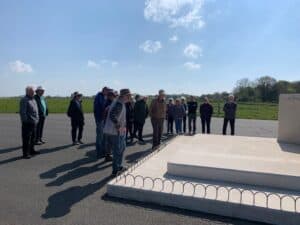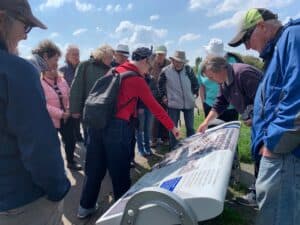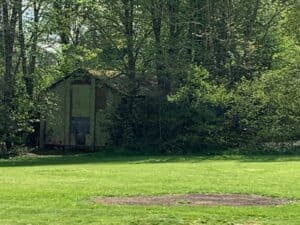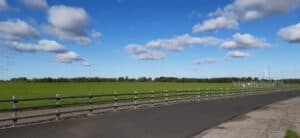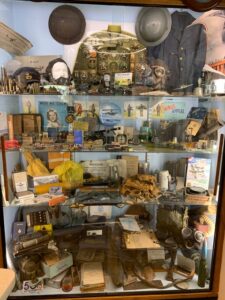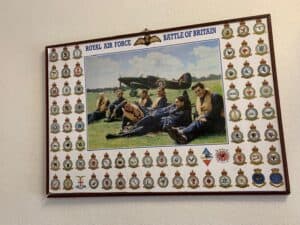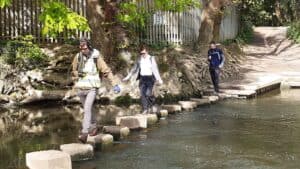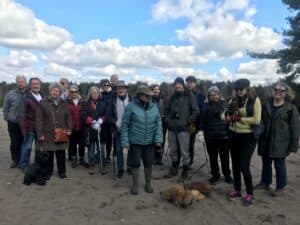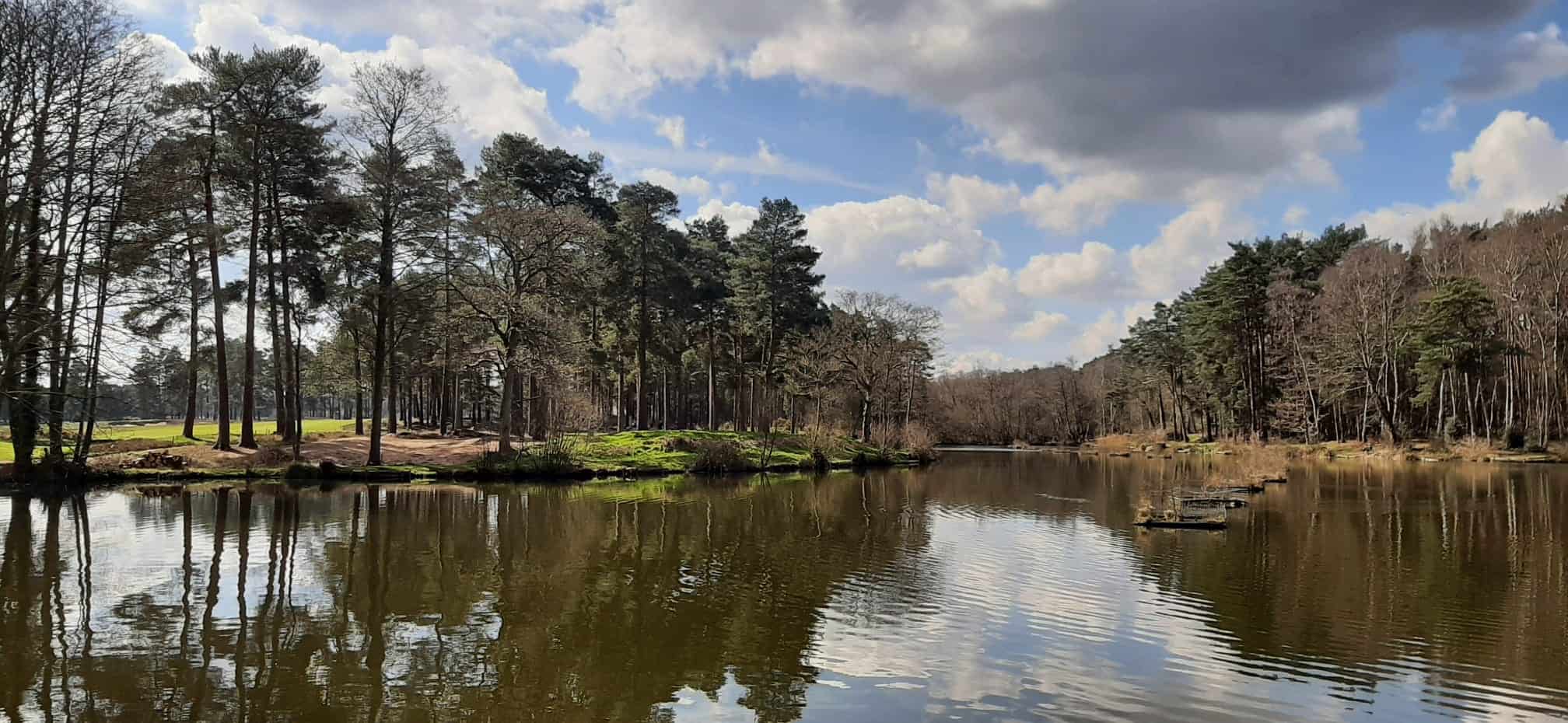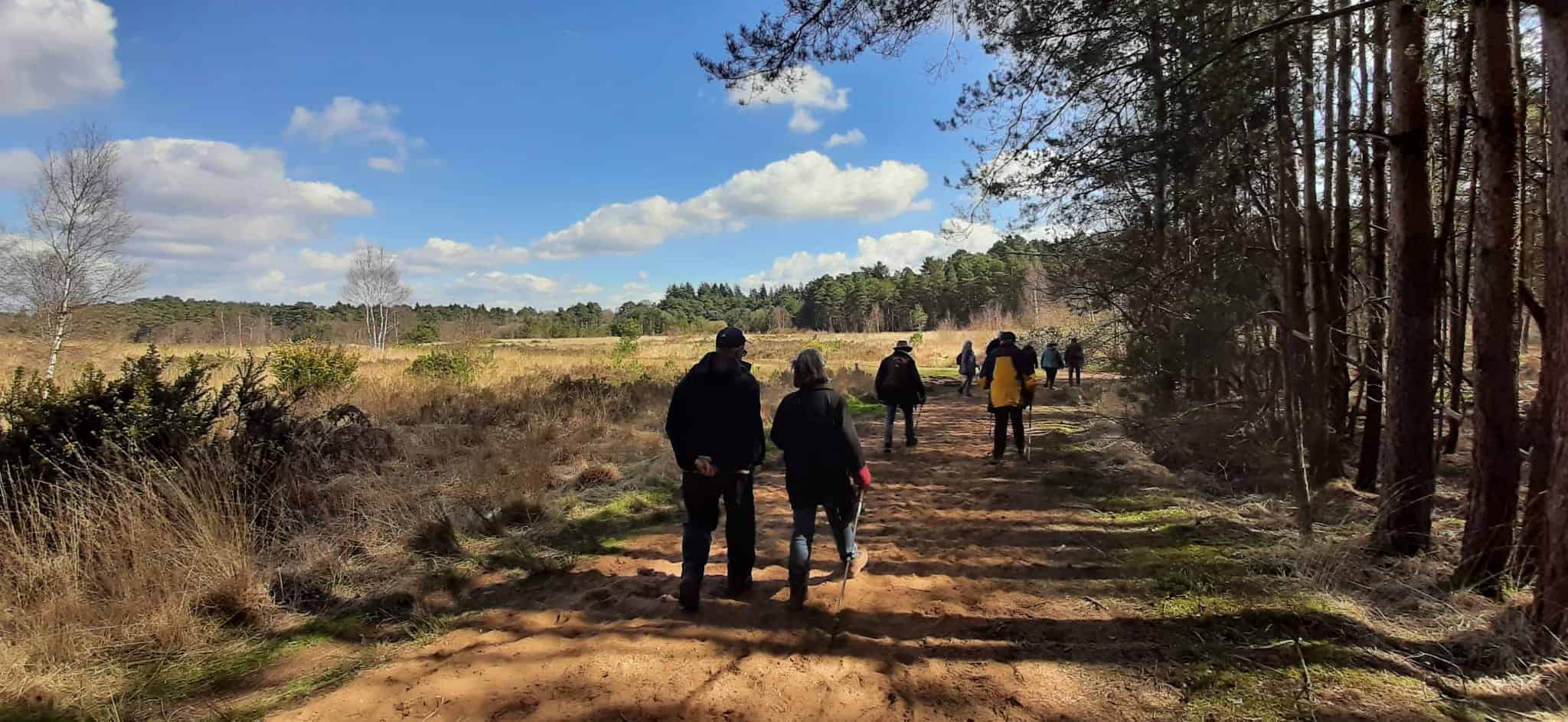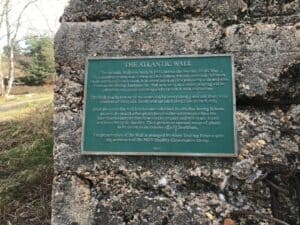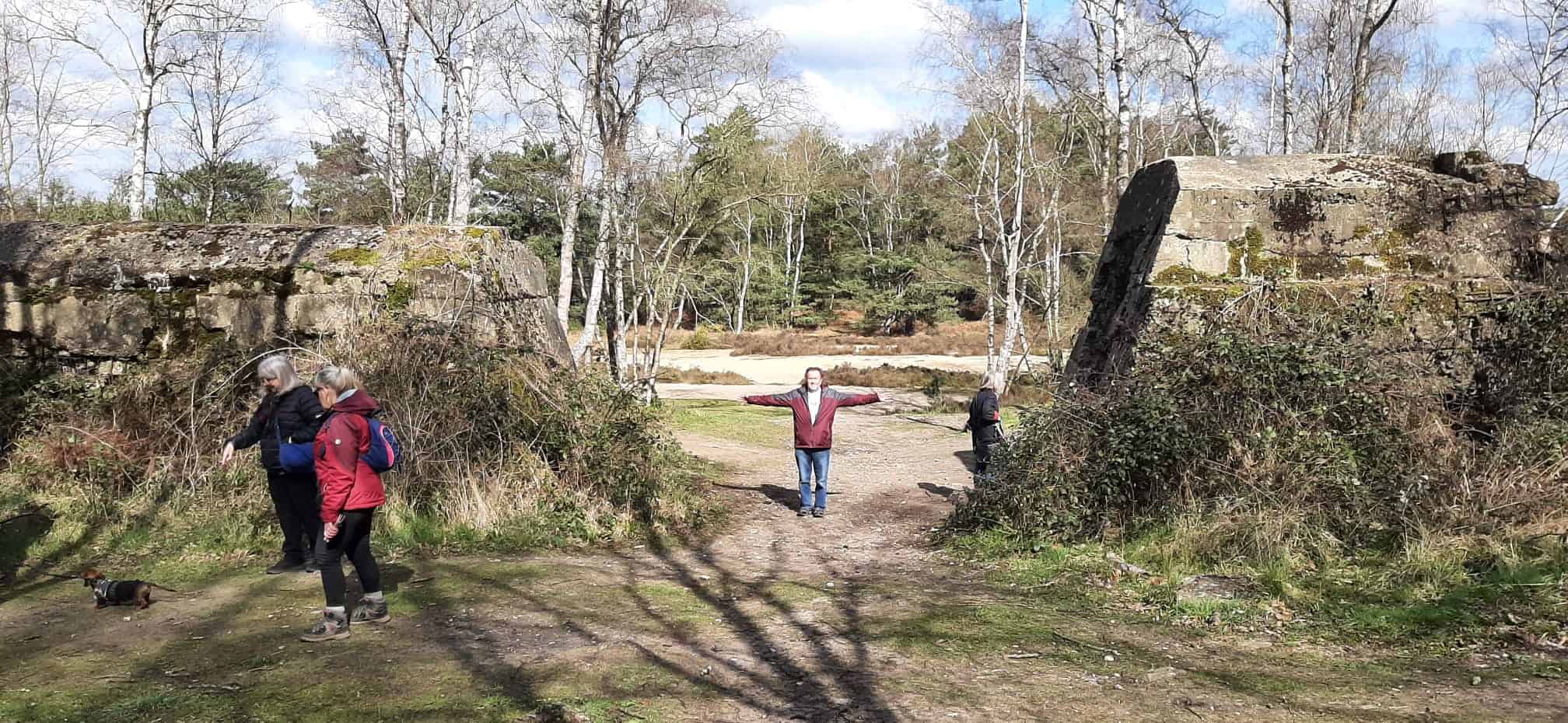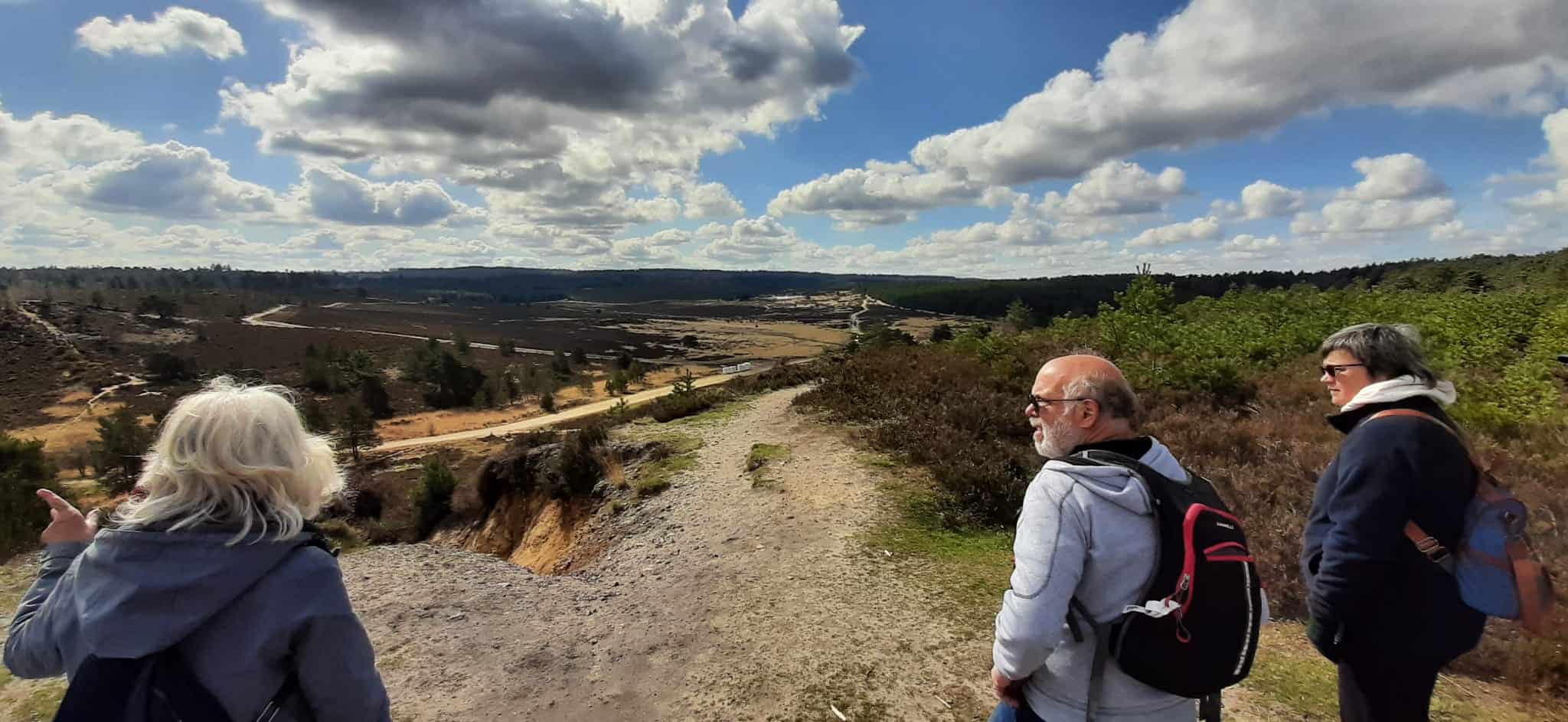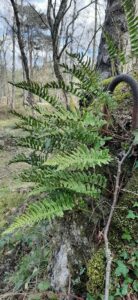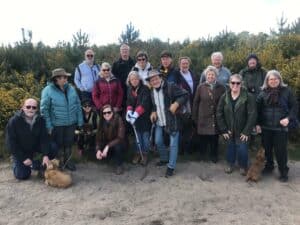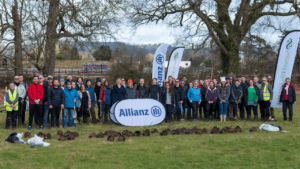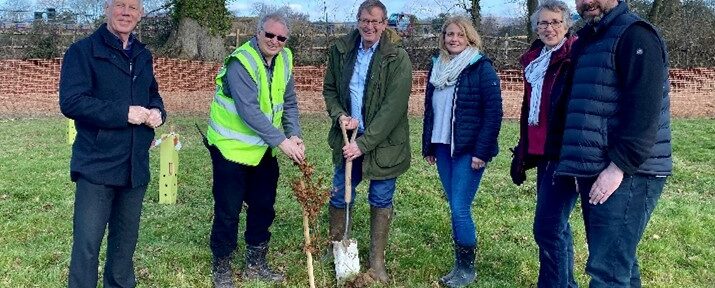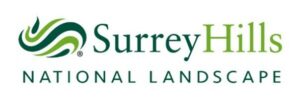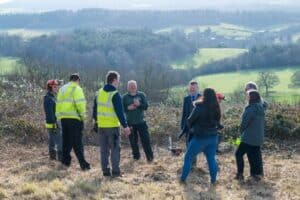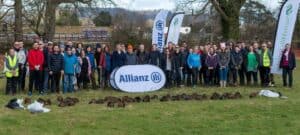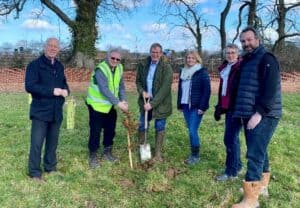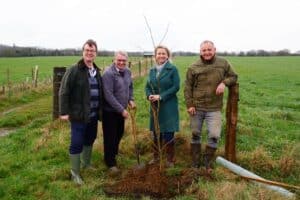
On 12th May 2022, the Society had an exclusive visit to Pierrepont Farm, near Frensham. The day started enjoying morning coffee on the terrace, overlooking a field of young Jersey cattle, while the sun lifted everybody’s spirits.
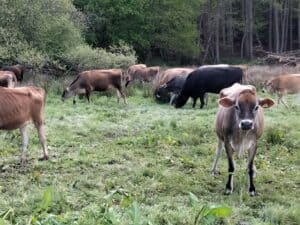
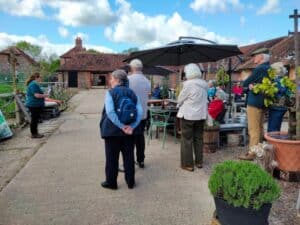 Pierrepont Farm is owned by the Countryside Regeneration Trust (CRT), who work to Protect, Promote and Regenerate farmland, focusing on how farming and wildlife can work together in harmony. Throughout the day, we received a series of talks, which explained exactly how they are making this happen.
Pierrepont Farm is owned by the Countryside Regeneration Trust (CRT), who work to Protect, Promote and Regenerate farmland, focusing on how farming and wildlife can work together in harmony. Throughout the day, we received a series of talks, which explained exactly how they are making this happen.
The first talk was given by Volunteer Coordinator, Brian who led us through a beautiful woodland, home to native bluebells and humming with birdsong. He explained the activities carried out by volunteers of the CRT, including the installation of nest boxes, hedge laying, fence building, and the creation of a permissive path, which led us through the woodland. The woodland also has a fantastic educational area for young children, where they can immerse themselves in nature and be creative outside.
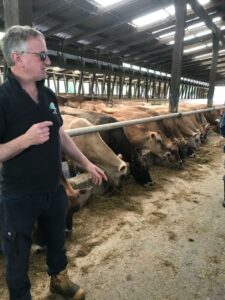 The next talk took place in the Dairy Farm parlour, led by Mike Clear the tenant farmer at Pierrepont Farm. While surrounded by beautiful Jersey Cattle, Mike outlined life on the farm and his love of Jersey cows before, leading the way into the robotic milking parlour.
The next talk took place in the Dairy Farm parlour, led by Mike Clear the tenant farmer at Pierrepont Farm. While surrounded by beautiful Jersey Cattle, Mike outlined life on the farm and his love of Jersey cows before, leading the way into the robotic milking parlour. 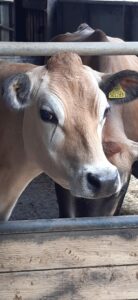 Here, quite remarkably, the cows queue up to be milked before heading on their way!
Here, quite remarkably, the cows queue up to be milked before heading on their way!
When it is there turn, the cow enters the milking pen and receives a small snack. The robot then cleans the cows’ udders before locating the teats using a scanner. The four milking tubes then attach to each teat, working independently from each other, depending how much milk is present in each teat. Once the milking is complete, the door of the pen opens, the cow heads on her way and the robot cleans itself before the next cow enters the milking area. No human assistance is required – truly amazing!
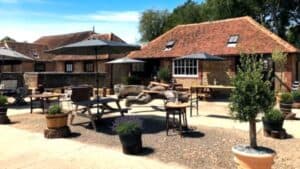 By this point, everybody had worked up quite an appetite and we assembled once again on the terrace of the Old Dairy, where one of the buildings is home to small brewery and taproom, Craft Brews. Led by business owner, Joe, we enjoyed a craft beer tasting session.
By this point, everybody had worked up quite an appetite and we assembled once again on the terrace of the Old Dairy, where one of the buildings is home to small brewery and taproom, Craft Brews. Led by business owner, Joe, we enjoyed a craft beer tasting session.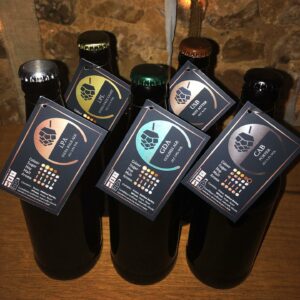 We learnt about the history of beer, the ‘IT’ names given to each brew and most importantly we enjoyed tasting it! Beef burgers were then munched in the sunshine before getting ready for the final talk.
We learnt about the history of beer, the ‘IT’ names given to each brew and most importantly we enjoyed tasting it! Beef burgers were then munched in the sunshine before getting ready for the final talk.
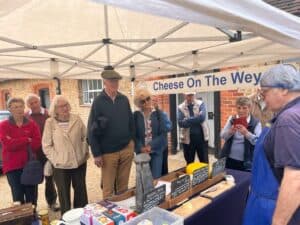 Another small business located on the site of the Old Diary, is ‘Cheese on the Wey’, who create up to eight seasonal cheeses using Jersey milk from the farm. Here we were invited to taste four cheeses (the perfect dessert!) and we learnt about the art of cheese making.
Another small business located on the site of the Old Diary, is ‘Cheese on the Wey’, who create up to eight seasonal cheeses using Jersey milk from the farm. Here we were invited to taste four cheeses (the perfect dessert!) and we learnt about the art of cheese making.
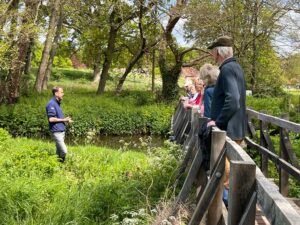 Needing to walk off all the delicious food and beer, we then followed our final guide Glen Skelton, Wetlands Project Manager at Surrey Wildlife Trust, to the River Wey and neighbouring wetland meadow, which is an SSSI (Site of Special Scientific Interest) due to its floristic diversity.
Needing to walk off all the delicious food and beer, we then followed our final guide Glen Skelton, Wetlands Project Manager at Surrey Wildlife Trust, to the River Wey and neighbouring wetland meadow, which is an SSSI (Site of Special Scientific Interest) due to its floristic diversity.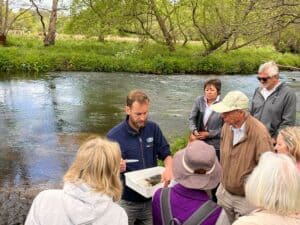
Here, Glen spoke to us about the importance of wet meadows for natural flood management, as well as their importance as habitats. He also demonstrated how to investigate water quality, looking at the invertebrates found from kick sampling. It was fascinating to see the abundance of life found in a tiny area of the river!
We then made our way back to the farm, where we thanked our hosts for a truly fascinating day. Pierrepoint farm demonstrates how farming, wildlife and the rural economy can complement each other, and it was the perfect setting for a beautiful day out in the Surrey Hills.
Christa Emmett
Project and Volunteer Coordinator


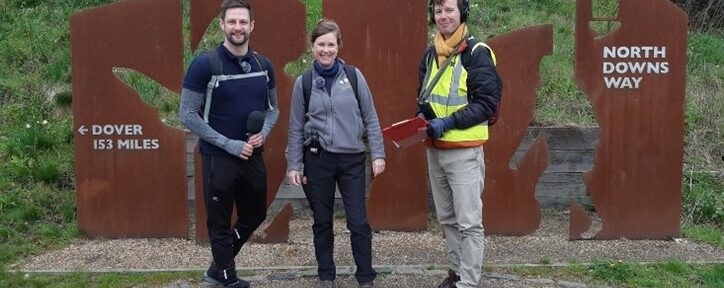
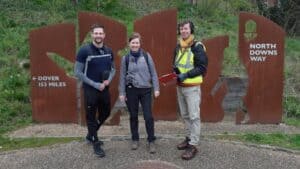
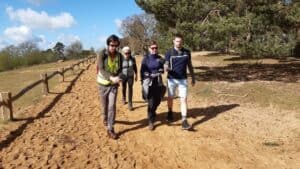
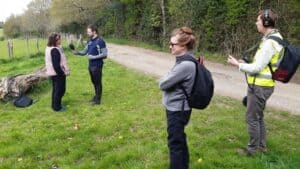
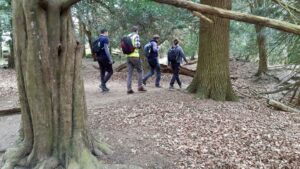 Amongst the aims of the project were promotion of the NDW to encourage more people to get out and enjoy our Surrey countryside. To this end, we were joined for one day by Peter Morris who is the NDW trail manager and on another section by Noreen Siba who is a Trustee of the Downlands Trust.
Amongst the aims of the project were promotion of the NDW to encourage more people to get out and enjoy our Surrey countryside. To this end, we were joined for one day by Peter Morris who is the NDW trail manager and on another section by Noreen Siba who is a Trustee of the Downlands Trust.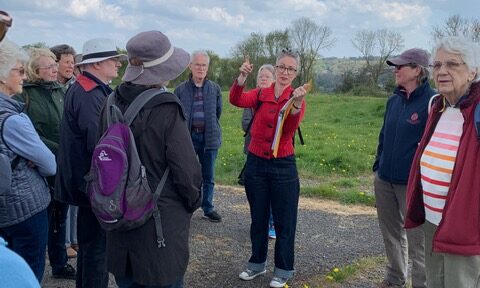
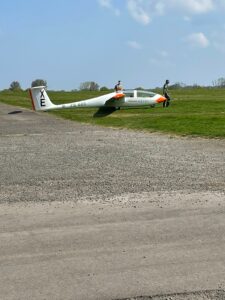
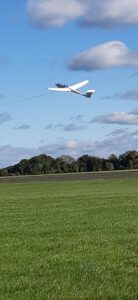 Airfield.
Airfield.